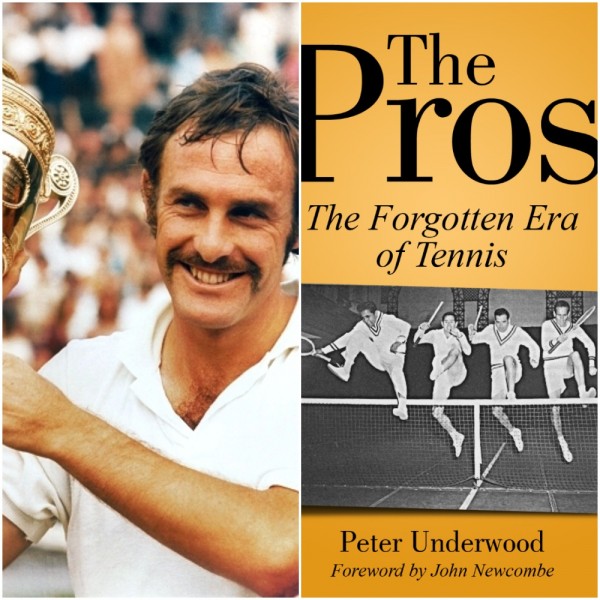The following is the foreword for the book “The Pros: The Forgotten Era of Tennis” by Peter Underwood written by International Tennis Hall of Famer John Newcombe. The book chronicles and narrates one of the most misunderstood and little-known eras of world tennis, the Professional or Pro Era. The book is available here via Amazon: https://www.amazon.com/Pros-Forgotten-Era-Tennis/dp/1937559912/ref=sr_1_1?keywords=The+Pros+Peter+Underwood&qid=1574131803&sr=8-1) describes this era through the stories of eight great tennis champions – Bill Tilden, Ellsworth Vines, Don Budge, Bobby Riggs, Jack Kramer, Pancho Gonzales, Ken Rosewall and Rod Laver – who dominated the pro arenas beginning in 1930 through to the start of the “Open Era” in 1968. Underwood explains why these celebrated champions were forced into what was often called a traveling circus, and where these sporting outcasts played each other during long and rather tatty tours all over the world, far from the cushy confines of what was then the amateur game at Wimbledon, Forest Hills and Roland Garros.
Peter Underwood’s story of eight great professional tennis players covers a period of almost 40 years prior to tennis going Open for professionals and amateurs in 1968.
Imagine being the best tennis player in the world, a hero in your own country through your exploits in the Davis Cup and the Grand Slam tournaments. You decide to turn professional, which means you are ineligible for all those events, so you find that at 23 or 24 years of age you no longer feature on the sporting pages and are, to a certain extent, a forgotten commodity.
So why do it? The simple answer is money! As the world’s best in 1962 Rod Laver probably made about $5,000 following his winning of the four Grand Slams. His professional takings for the first year as a pro in 1963 were about $100,000. In 1967 I won Wimbledon and the US Singles, finished the year at No. 1 and made about $15,000, most of which came from under-the-table payments for appearing at tournaments.
Certainly, before the Open Era, to make an honest living — and of course to be decently rewarded for doing so — was the main reason why the top amateurs looked to leaving the great tournaments and joining the pros. But as Peter points out, in those days the very best players were pros, and spurred by curiosity and pride, the champions of Wimbledon and the Davis Cup also wanted to see how they stacked up against them. Peter quotes Laver, the Grand Slam behind him, saying that only by joining the pros could he ‘find out how good [he] was’.
I turned pro immediately after the Davis Cup Challenge Round against Spain at the end of 1967, and the first open tournament was in April, 1968; the first major, the French Championships, followed in May that year. Then came the first Open Wimbledon a month later, where Rod The Rocket defeated fellow new pro — and my doubles partner — Tony Roche in the Final. So I only spent a short time in the pros, and that was when open tennis was on its way. As a result, I wasn’t forced to suffer years of the hardships — and the injustices — of the old pro tour, all of which are spelled out in this book.
The names Peter has chosen to follow are Tilden, Vines, Budge, Riggs, Kramer, Gonzales, Rosewall and Laver. As I grew up I was a big fan of the history of the sport I had chosen to be a big part of my future life. My belief is that to truly love your sport you must have an understanding of its history and past heroes. Here we find out how these eight men grew up, and what inspired them to become champions.
This is an important task Peter has chosen to tackle and I think his book should be a must read for any aspiring young player. Certainly any sports lover born between 1930 and 1970 will devour it. These players were all national and international heroes in their time, and media stories following some of their epic clashes make for fascinating reading.
I wish Peter all the best for his book, which should be compulsory reading for budding young tennis players and tennis lovers in general.

